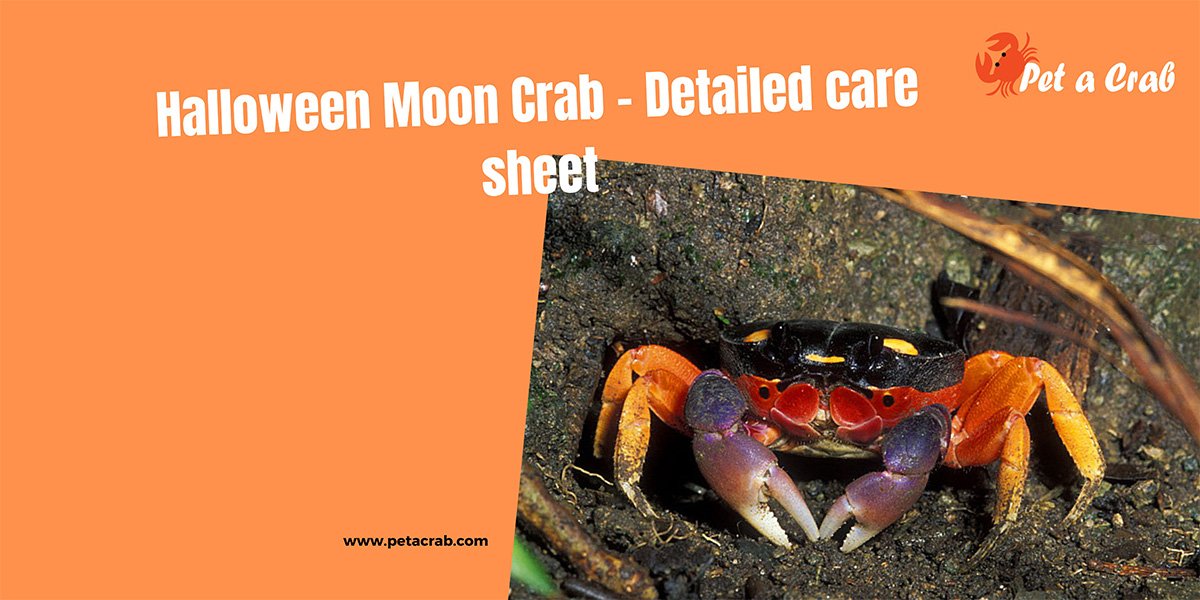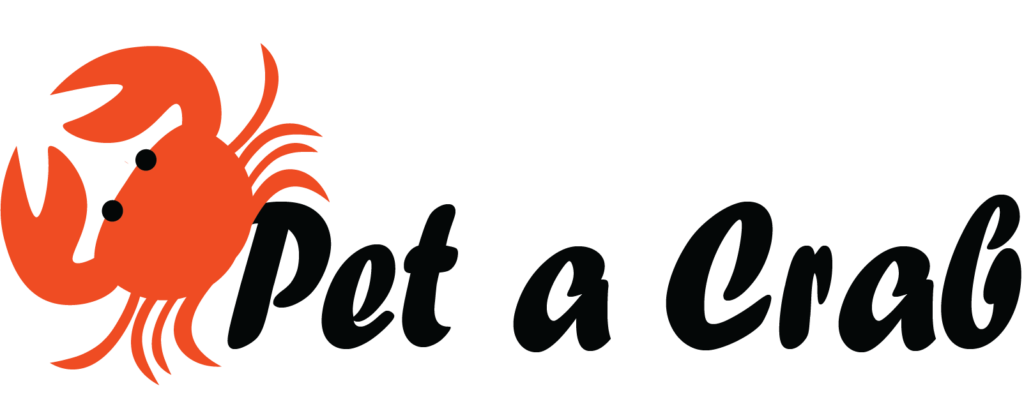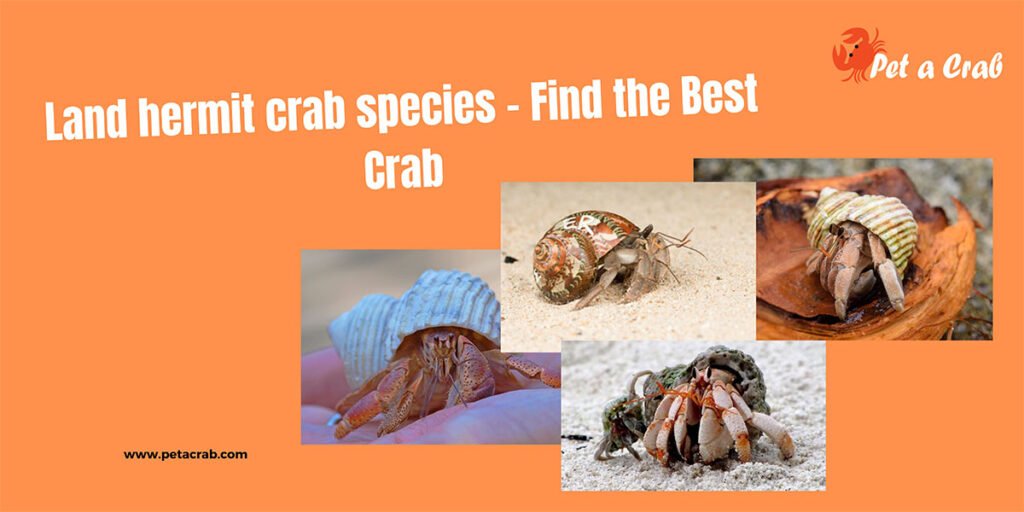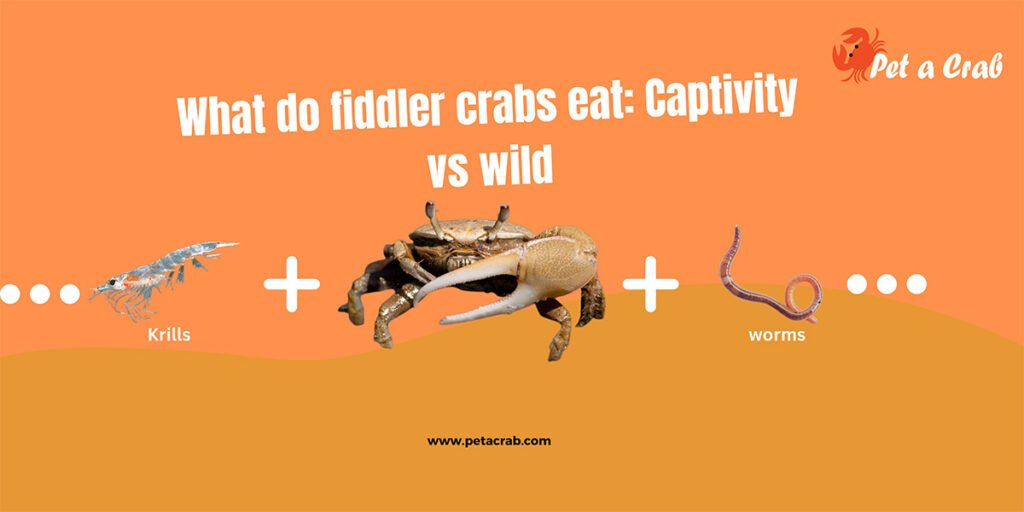Have you ever seen a Halloween moon crab, which is also known as Gecarcinus quadratus? With their unpredictable colors and cute little faces, they are the most incredible crabs in the world. In captivity, they do very well, and this can help to make them wonderful pets. Besides, these moon crabs have perky personalities that are very interesting to watch.

Although they are very easy to care for and feed. So, let’s introduce you to the wonders of this harlequin crab fact. Here you can get some advice and valuable facts to give a wonderful life to these beautiful pets.
Scientific facts about the Halloween moon crab
- Kingdom: Animalia
- Subphylum: Crustacea
- Phylum: Arthropoda
- Class: Malacostraca
- Order: Decapoda
- Infraorder: Brachyura
- Family: Gecarcinidae
- Genus: Gecarcinus
- Species: G. quadratus
Halloween Moon Crab Quick Facts
- Size: Up to 2-2.5 inches and 5–6 cm
- Tank Size: 15 gallons or 60 liters
- Keeping: Easy
- Breeding: Very difficult
- Substrate: More than 6 inches or 15 cm
- Water Type: Freshwater and saltwater bowls
- Optimal Temperature: 26 – 29°C (79°F – 88°F)
- Diet: Mostly herbivore/omnivore
- Temperament: Semi-aggressive
- Life Cycle: Upto 8 years
- Environment: Terrestrial
- Color: Black, Purple, Orange and Yellow
- Other Names: Moon Crab, Halloween Crab, Harlequin Crab, Purple Moon Crab, Harlequin Land Crab, Red Land Crab and White Spot Crab

Key Characteristics of Halloween Crab
Appearance
The moon crab gets their unique name as they have all the Halloween colors. Generally, they look quite breathtaking with their black carapace and orangish red legs. Their purple claws appear whiter near the tips. Also, they have two minuscule white dots on the back of their black carapace.
Behavior
Though Halloween crabs are very shy and wary creatures, they dislike being touched in any way. So that most of their time is spent in hiding. Besides, always be scavenging for food. However, it is very important to remember that they have a semi-aggressive temperament. Also, aggression is latent until it reaches adult size.
Feeding
Usually, these crabs are extremely opportunistic eaters. This means red land moon crabs eat about anything edible they come across. Sometimes, people say that if their crabs eat some product, they provide more and more of it. Unfortunately, this is wrong. If we want to make our crabs healthier, we need to learn more about their feeding. Generally, they eat seedlings, fruits, leaf litter seeds, the detritus of decomposing plants, and benthic algae.
Habitat
The habitat of the Halloween crab is naturally on the Pacific coast. Also, some of the Atlantic coasts, such as Florida and Guyana in South America. However, they live in forests, swamps of mangroves and beaches. Since they are not amphibians but terrestrial creatures that require easy entry as well as exit from the water.

Size
Usually, land crabs are not so big. In captivity, adult moon crabs can grow up to 2 to 2.5 inches. Besides, their legs can grow up to 4 inches. However, in the wild, their carapace might grow up to 4 inches.
Breeding
Though Halloween crabs are very easy to keep, they are impossible to breed. Because it takes a lot of time for the larvae to develop into tiny copies of adults. They cannot do it in freshwater; they can only do it in saltwater.
Tank Size
For one harlequin moon crab, it is recommended to use a 15-gallon terrarium with a screen top. But when you are housing two or more, they require at least 30-gallon terrariums.
Lifespan
Typically, the lifespan of these Halloween moon crabs is up to 8 years in captivity. Whatever, depending on multiple factors, the average lifespan can be anywhere between 4 and 8 years.
How to care for a Halloween moon crab
The land moon crabs are suitable for beginners because they require low maintenance. But owners should be prepared to put in the work to keep their pets happy.

- Food and water
Purple moon crabs eat whatever they can find in their habitat. Their diet consists of fruits, seeds, algae and more. In captivity, you should need to provide a similar diet. Kale, broccoli, spinach, seeds, nuts, and oyster shells are good plant-based foods for them. These foods are rich in calcium, which is essential for their health.
- Handling
It is suggested that they not be handled, as they are shy crabs. Only handled when necessary, such as to relocate the crab. However, when handling, you should wear gloves to avoid injury. Remember, never pick them up by their legs or pincers to avoid loss of limb.
- Common health issues
Typically, they are not prone to disease if kept in optimal conditions. However, with improper feeding and care, there are potential health concerns, such as calcium deficiency and malting issues. To avoid these issues, treat calcium deficiency and introduce calcium-rich foods such as egg shells and oyster shells.
Factors to Consider Before Getting a Halloween Moon Crab
- These beautiful moon crabs got their name from the holiday.
- They do very well in captivity and like to hide.
- Moon crab requires a certain environment.
- Typically, they are herbivores and terrestrial.
- Harlequin moon crabs are nocturnal.
- Generally, they have very sensitive legs and pincers.
- Usually, these crabs fly solo and have a decent lifespan
- Mostly, they are found on the Pacific coast, along the coasts of Rics, Panama and Mexico.
- When they are moult, they disappear for weeks in the end and hide in the darkness.
- Typically, they are big no-no as tankmates for any species of crab.

Halloween moon rab suitable tankmates
The land moon crab is not social. So it can be risky to put multiple animals in the same tank. In particular, male crabs are extremely likely to fight and eventually kill one another when housed together. Moreover, do not keep them with hermit crabs because there will not be peace between them. In addition, Halloween crabs dig too much. So it can be very dangerous to any malting crab in the same tank.
Frequently Asked Question
What can I do if the moon crab loses a leg?
If Halloween moon crabs lose a leg or a pincer, you can give them healing foods like coconut oil, peanut butter, calcium, egg shells, bee pollen, etc.
Does the moon crab have any health issues?
Not all the time. But sometimes they might run into a few health issues, such as calcium deficiency and humidity issues.
How often should I change the moon crabs’ food?
You can usually change their food for 24 hours before removing it. Be sure that they are not consumed in one day and are removed to prevent moles.
Do Halloween crabs need calcium?
Yes, calcium is very crucial for their exoskeleton and overall health and well-being.
What is the minimum depth of substrate for moon crabs?
The minimum depth of substrate is at least 15 to 25 cm, or 6 to 10 inches of substrate. So that your crabs feel comfortable.
To sum up,
As with any other crab, Halloween moon crabs are a huge responsibility. Besides, they require very specific care to thrive. So if you are a crustacean lover with prior experience, it will make your crib look fab. But not for everyone.
Related article – Interesting relation between pom pom crab and anemones


